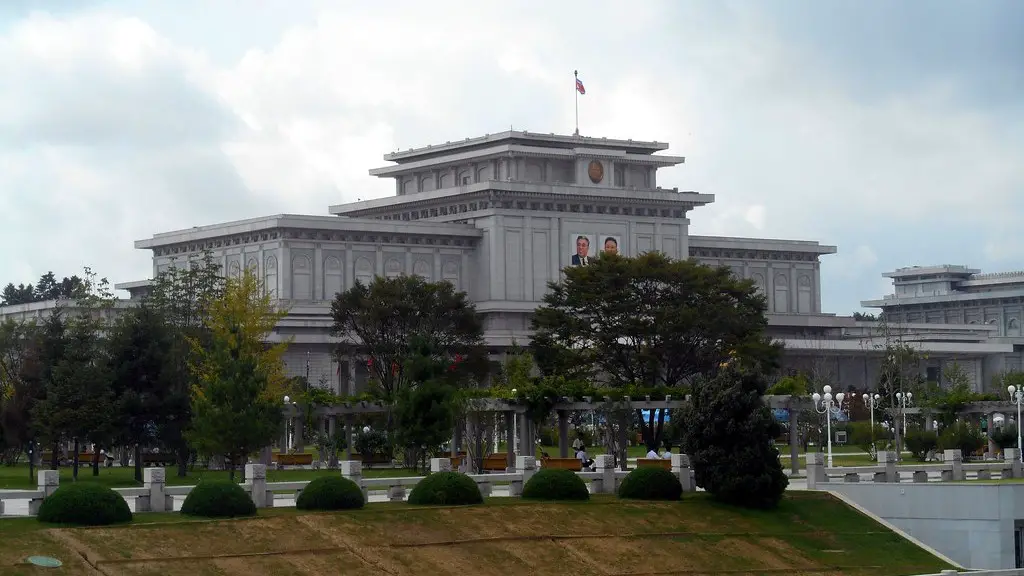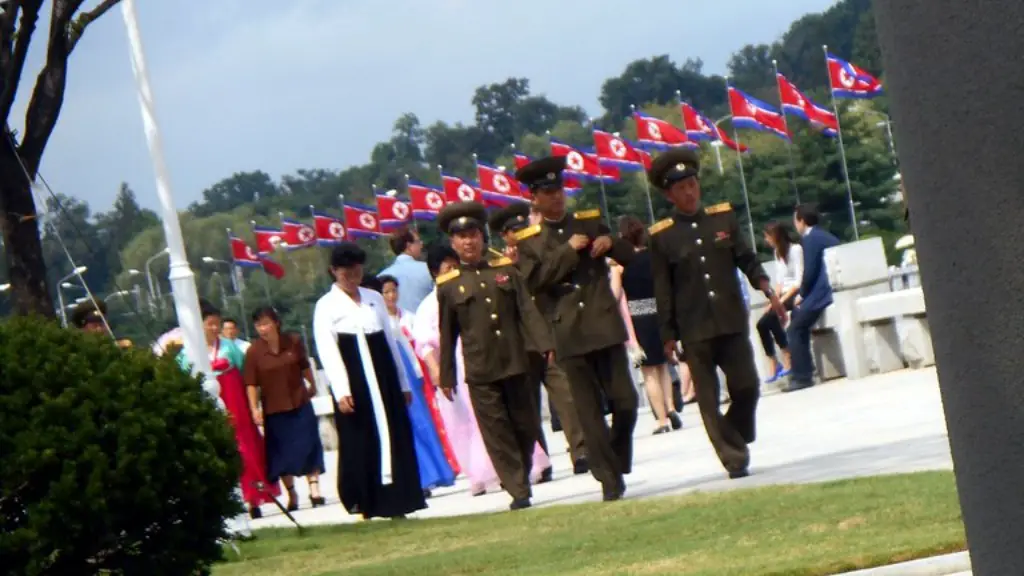Size of North Korea’s Nuclear Weapons
North Korea has become one of the few countries in the world that has developed nuclear weapons. According to the Bulletin of the Atomic Scientists, North Korea has enough fissile material to construct up to fifteen nuclear weapons.
Few accurate details are available about North Korea’s nuclear weapons capabilities and delivery systems. However, experts understand that the nation has a fairly sophisticated nuclear weapons program, including a long-range intercontinental ballistic missile (ICBM) capability.
North Korea’s nuclear weapons are believed to be a mix of plutonium-based warheads and highly enriched uranium-based devices. It is likely that both gravity bombs and warheads mounted on intermediate-range ballistic missiles can be used to deliver North Korea’s nuclear weapons. Intelligence reports suggest that North Korea might be capable of delivering a nuclear device up to 5,000km in the event of open hostilities.
The warheads used by North Korea range in size from 15 kilotons to 100 kilotons in explosive yield. The size of a warhead is determined by the amount of material used in producing the device and how effectively it is compressed. Experts believe that North Korea’s plutonium-based weapons could reach as high as 15 kilotons of explosive yield, while uranium-based weapons could have yields of up to 30-100 kilotons.
It is also possible for North Korea to create a thermonuclear weapon. A thermonuclear weapon is significantly larger than the weapons that North Korea has developed thus far, with a much higher yield than either type of warhead. The size of a thermonuclear weapon is typically around 200-500 kilotons.
North Korea’s Nuclear Program
North Korea has long been a source of concern for the international community due to its nuclear weapons program. The nation’s nuclear weapons efforts began in the 1970s when it launched a program aimed at creating a nuclear bomb.
Throughout the 1990s and early 2000s, North Korea conducted a number of underground nuclear tests in order to advance its weapons capabilities. This prompted international concern and prompted a number of actions by the United States and other countries aimed at curbing North Korea’s activities.
In 2005, North Korea agreed to abandon its nuclear weapons program as part of the Six-Party Talks, but there is ongoing concern that the nation may not be honoring the agreement. In 2009, North Korea announced that it had conducted a second underground nuclear test, and it is believed that the nation has conducted a third test in 2013.
In 2017, following a period of heightened tension on the Korean peninsula, North Korea conducted a series of missile tests and increased its stockpile of nuclear weapons. In 2020, North Korea claimed to have tested a new type of nuclear weapon, with a yield estimated to be significantly higher than the previous tests.
Effects of North Korea’s Nuclear Weapons Program
North Korea’s nuclear weapons program has had far-reaching consequences in the region and further afield. The development of nuclear weapons has been linked to a number of foreign policy objectives that North Korea has sought to pursue. In particular, the nation has used its weapons as a bargaining chip to secure economic concessions and diplomatic recognition from other countries.
The development of nuclear weapons by North Korea has also been linked to a number of regional consequences. In particular, the proliferation of nuclear weapons in the region has prompted a number of measures by other countries, such as Japan and South Korea, aimed at deterring North Korea from using its weapons. Additionally, the development of nuclear weapons has resulted in increased military tensions on the Korean peninsula and surrounding region.
Furthermore, North Korea’s nuclear weapons program has been linked to a number of global implications. The most notable of these is the threat of a nuclear arms race in the region, which has prompted a number of questions and concerns about the consequences of such an event. Additionally, the development of nuclear weapons by North Korea has been linked to increased risks of nuclear proliferation and increased instability in the region.
What Can Be Done to Combat North Korea’s Nuclear Program?
As North Korea continues to advance its nuclear weapons capabilities, there is ongoing concern about how to effectively respond to the nation’s actions. The most effective way to combat North Korea’s program is through diplomatic means, such as the United Nations Security Council and the Six-Party Talks.
The United Nations Security Council has been at the forefront of international efforts to prevent North Korea from developing nuclear weapons. The council has imposed a number of sanctions on North Korea, aiming to demotivate the nation from pursuing further advancement of its nuclear program. Additionally, the council has also increased the pressure on North Korea to abide by the agreements it has signed to abandon its weapons program.
The Six-Party Talks is a forum for discussing international security issues on the Korean peninsula. The talks have led to a number of agreements aiming to limit North Korea’s nuclear weapons program, such as the 2005 agreement to abandon its weapons program. It is hoped that the Six-Party Talks can help to move the region towards a peaceful resolution of the security issues.
North Korean Reactions to Sanctions and Arms Control Strategies
In response to the international community’s effort to contain North Korea’s nuclear program, the nation has reacted in various ways. In recent years, North Korea has taken a more aggressive stance against the sanctions imposed by the international community, accusing them of infringing on the nation’s sovereignty and right to develop nuclear weapons.
North Korea has also continued to push forward with its nuclear weapons program, despite the international sanctions. The nation has conducted a number of missile tests in recent years, potentially in an effort to demonstrate its nuclear capabilities and deter its adversaries. Additionally, North Korea has continued to produce weapons-grade uranium despite being under international pressure to do so.
In terms of arms control strategies, North Korea has not shown any willingness to engage in any meaningful dialogue. The only exception to this has been in 2017, when North Korea reached a historic summit with the United States in order to discuss the possibility of disarmament. However, this effort ultimately failed to achieve any concrete results.
Conclusion
North Korea’s nuclear weapons program is a source of ongoing concern for the international community. The nation is believed to have a stockpile of weapons ranging in size from 15 kilotons to 100 kilotons, and it is possible for North Korea to create a thermonuclear weapon with a much higher yield.
The international community has taken a number of steps to combat North Korea’s nuclear weapons program, such as imposing sanctions and engaging in arms control discussions. However, North Korea has responded to these efforts with aggression and has continued to pursue its nuclear program, raising concerns about the potential implications of such actions. Moving forward, it is essential that the international community continues to work together in order to prevent further escalation of the security situation in the region.

